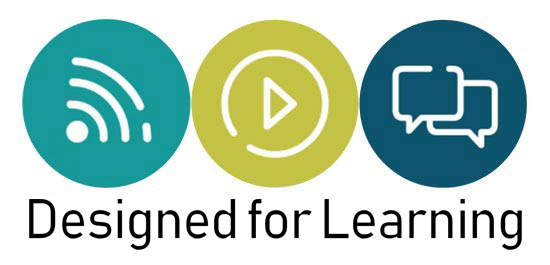17 Oct Create or Curate?
One of the current hot topics in e-learning is curation. But what exactly is curation? And what relevance does it have to e-learning?
Interestingly the word derives from the Latin cura – meaning literally someone ‘who cares’. Curators have existed for thousands of years and their role is defined as follows:
Traditionally, a curator or keeper of a gallery, museum, library or archive oversees an institution’s collections and is responsible for the safe keeping, display, documentation and interpretation of the objects and artefacts in the collection.
Interpretation is the key word here. These institutions have substantial collections of objects and artefacts – way too much usually to put on display – so the role of the curator is to create an exhibit that combines a variety of artefacts in order that they may be interpreted in some way by the visitors. Interpretation is largely about telling stories. And not surprisingly it’s about learning so in that respect a curator is a sort of teacher.
So in the simplest terms curation is about organising, displaying and interpreting stuff. More tellingly it’s about organising, displaying and interpreting other people’s stuff.
Curation on the Web
In this post I really want to focus on curation as it applies to learning (and specifically online learning) but before we do that it’s worth exploring the current trend for digital curation on the web.
Curation is big on the web driven largely by a raft of new platforms such as Storify, Scoop.it and Pinterest that make it easy to collect, organise and display the articles, photos, and videos we come across while trawling the Internet.
Curation with these tools appears to be primarily about aggregation and many curators place freshness above anything else so many curated collections end up looking like the front page of newspapers. Indeed many of the platforms are purposely designed to look like magazine pages. A scoop beats old ideas hands down in the attention economy.
Learning is different to news. The important stuff is persistent. It has a long shelf-life. If you are new to e-learning then reading an article on ‘Social Learning’ isn’t going to be the best place to start your learning journey even if it is the hottest new topic. Curation applied to learning is going to be much more dependent on interpretation rather than organisation. Before our new e-learner reads about ‘Social Learning’ they should understand what an instructional designer does and why we need LMS’.
But we are all creators not curators?
When a client calls and wants a programme on equality and diversity we hardly ever say ‘That’s been done already – you can buy it off-the-shelf’. Our first instinct as learning designers (and business people) is to create shiny new learning experiences – designed precisely for the audience and content we have been given by the (paying) client. Why re-cycle old stuff when we can start afresh on a blank sheet?
Well there are a number of possible reasons but four of the most compelling are:
- There’s already some really good stuff out there
- Content that already exists can be made available immediately
- It’s more interesting to mix and match than to build something homogenous
- It’s much more cost effective to recycle than to create something new
Suddenly curation is sounding quite attractive if I’m trying to get as much learning done as I can on a limited budget and/or timescale.
However curation is actually harder than it looks because the skill of the curator is in interpretation and in our case as learning designers in creating a coherent learning journey. To illustrate this let’s look at the place where we are most likely to have come across curator’s prior to 2012.
Museum’s 20 years ago were a place you went to see things in glass cases with labels. Museum’s today take a very different approach. They create learning journey’s through the collection of artefacts on display. Modern museum curator’s are effectively learning designers working in a different medium – the medium of objects and artefacts.
Effective curation involves a number of key skills:
Finding
With digital assets we have the advantage of powerful search and stacks of content feeds.
Filtering
We often need to look beyond the most popular stuff to filter out the older but more persistent stuff that we really need. Some things change slowly and often they are conceptually key. Facts not fads.
Grading
Not all content is appropriate for all audiences. If you are curating a collection on Roman technology for primary school kids it will feel quite different than if you were to curate the same collection for a graduate archaeology class.
Synthesising
Not all collections will speak for themselves. A curator’s role is to join the dots and to paint the bigger picture.
Summarising
Sometimes people need the condensed version. Sometimes they need the advanced guide.
Signposting
Sometimes people simply need to fills gaps in their knowledge. Signposting them to the bits they need or are interested in is a key curation skill.
Balancing creation with curation
In practice a successful online learning experience is likely to result in a mix of creation and curation. The relative amounts of each will depend on the subject matter and what is already available but I imagine an analysis and design loop along the following lines:
- Establish the learning objectives and intended audience
- Create a broad content outline and scope
- Find and filter existing digital assets
- Create a learning path design based on the curated assets
- Create additional content to fill the gaps
- Create the final learning journey
Clearly there are challenges when developing learning using a mix of creation and curation. Do you have permission to use third party materials? Will they be there over the long term? What if they are updated or moved?
In a future post I’ll look at some of the practical problems associated with curation and also explore some of the curation friendly learning platforms and technologies (such as the quirky Curatr from @benbetts).
Tomorrow I’m at the Weelearning event in Bath – ‘Curate? Create? Debate?’. Some interesting contributions have been made to the pre-session Google Doc. Hopefully I can share those after the event.
I’ve added this endpiece from Julian Stodd which was posted on the Weelearning Google Doc – it echoes some of my points quite nicely I think.
My first job was in a museum, a local, dusty affair concerned primarily with telling the story of how the town had grown from it’s early marketplace origins through to it’s current shape and size. The story involved buildings, artefacts, documents and people. Indeed, one of my personal jobs was to go and record oral histories from elderly local residents: recordings that gave depth and flavour to exhibitions. From time to time, we would pull together an exhibition, and that’s when we would curate. It would start with us defining a central story: ‘The wool trade in Chichester’, or ‘The market traders’. Once we had the story, we would decide what, from the extensive collections, we would use to help us to tell it. The decisions were laden with subjectivity. For example, we had a coffin. It had been used to commemorate the last cattle market run in a continuous eight hundred year history. If you just saw it, it’s just a coffin. If you know the story, it represents (or signifies) something else entirely. The curator needs to understand the thing, but also the meaning of the thing. They are a historian and a storyteller. Julian Stodd







[email protected]
Posted at 10:09h, 25 Marchnecessitatibus qui quis voluptate aspernatur quia. sit nihil minus asperiores ut officiis consequatur eius.
[email protected]
Posted at 14:51h, 29 Marchnon voluptas suscipit magni molestiae molestiae temporibus rerum amet nemo exercitationem itaque voluptates magnam. vel rerum ipsa ad cumque velit rerum magni dolores sed sint non fuga sed et corrupti